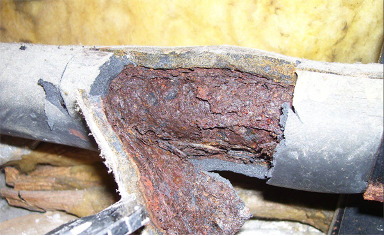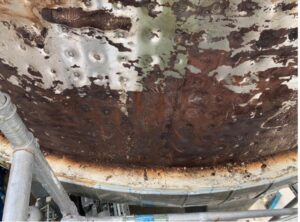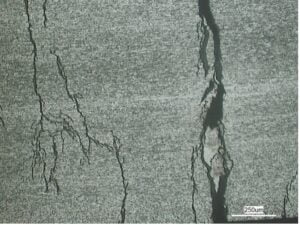This month we continue our #epicfail series on failure mechanisms looking at the consequence of corrosion under insulation.
Corrosion Under Insulation (CUI) is a form of external corrosion that is caused by trapped water contacting an insulated surface. It is one of the most common damage mechanisms in the oil and gas and chemical processing industries. It is estimated that CUI accounts for 40-60% of pipe maintenance costs, estimated to be around $1 trillion annually in the US.

When plant and pipework are insulated, there is usually a space in which water can collect on the metal surface with access to air. The corrosion rate under these conditions is primarily controlled by temperature, availability of oxygen and water and the presence of corrosive species in the water. In general terms, experience has shown that the most critical temperature range for CUI is 30oC-120oC. Materials operating in the temperature range 100 to 120˚C are at greater risk to CUI.
Insulating materials that absorb water are particularly troublesome in that they hold water and slowly allow the concentration mechanism to proceed. Further, CUI may be influenced by the chemical nature of the insulation material. Some cladding materials contain free chlorides which may promote CUI. Chloride stress corrosion cracking can occur in austenitic stainless steel at temperatures of 65oC and above. This is of particular importance for coastal sites and offshore installations where chloride contamination will be enhanced.


Surface coatings may provide protection against corrosion if the insulation becomes wetted, though proper selection and application are particularly important. Coatings should be compatible with the insulating material and suitable for use at the anticipated temperature. Coatings applied to poorly prepared or hot surfaces are much more likely to break down. Particular attention should be given to proper application at welds.
In order to reduce the risk of CUI, the following should be implemented:
- Consideration should be given to removing the insulation on equipment where heat conservation is not as important.
- Application of a suitable coating.
- Consideration of the ability of the insulation material to absorb and retain water. Fibre type insulation materials, e.g. mineral wool, fibreglass and calcium silicate easily absorb water, whilst closed cell type materials e.g. perlite, foam glass are less likely to absorb as much water. A better insulation technique is through contact free insulation which is held away from the steel surface.
- Insulation should be designed and installed to inhibit or reduce the potential for CUI. Attention should be given to preventing ingress of water.
- Regular inspection to determine the presence of any corrosion. Examples of some NDT techniques available for detecting corrosion under insulation include pulsed eddy current, guided wave ultrasonics, flash radiography and real-time imaging radiography.
To find out how R-TECH Materials can help you with a materials issue please feel free to contact us.